On Syncopation
I was recently asked to defend my use of syncopation while playing the reel “The Miller”, and rather than using the convenient fallbacks of, “Well, this is the tradition, and my teacher’s teacher’s teacher's…teachers include Niel Gow and Corelli” (a horrible argument for anyone who claims to practice historically-informed performance, as can be verified by spending ten seconds listening to my more immediate musical ancestors, Hector MacAndrew and Eugène Ysaÿe) or “I have a paid research fellowship at a prestigious institution to study this nonsense, so bugger off” I figured I should actually, you know, respond appropriately.
This is a specific topic that I plan to discuss in the paper I’m writing for my work at the Newberry Library; unfortunately I haven’t gotten there yet. So please consider this post to be a loose collection of thoughts pending further exploration to take place by the end of June.
Any discussion of Scottish rhythm should start with Philip Tagg’s wonderful documentary on Scotch snaps. Unfortunately, though he has a very nice discussion of polyrhythm, he doesn’t address syncopation per se. We must turn to primary sources.
My Newberry research is focused on Robert Mackintosh’s second collection (“Sixty eight new Reels Strathspeys Quicksteps…”), and it’s loaded with nice examples. His reels, for example, universally tie together consecutive eighth notes of the same value. The first page demonstrates this nicely with “The Jockey Club”:

The effect is intensified in the last reel of the collection, “Miss Betty Robertson’s Reel”, by adding in dotted quarter notes and eighth note groups slurred in threes. The first half of bar four is also worth highlighting—while it looks like four straight eighth notes, the descending figure ending with the open D string gives it a nice off-beat flavor.

Moving on from reels, we see that the same “tie the same note across the beat” rule holds for jigs. No further comment necessary:
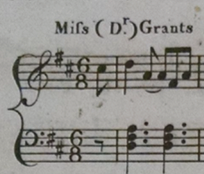
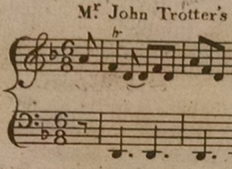
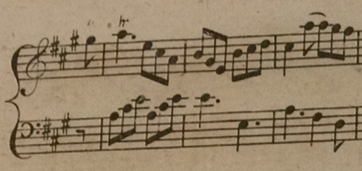
There’s not too much chamber music in the collection, but “The Duchess of Gordon’s Delight” does have a nice syncopated section as part of a variation:
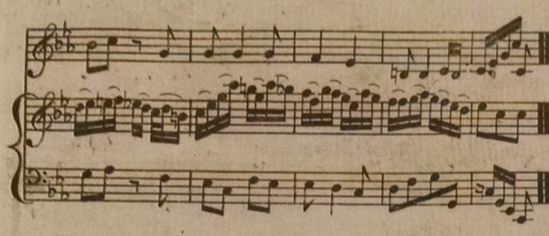
And finally, the one 4/4 hornpipe has a less-obvious form of syncopation. Rather than the traditional “pom-pom-pom” figure of three quarter notes every few bars, Mackintosh opts for the “pom-paaaaah” of a quarter note followed by a half note:
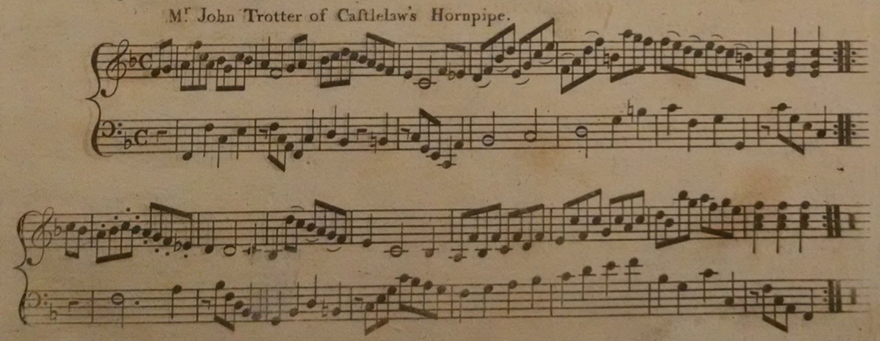
Regarding strathspeys, arguments could be made that the arrow stroke (which Mackintosh provides ample opportunity for) is a form of syncopation, but I don’t want to go there. The other tune forms prove my point well enough.
I have Mackintosh on the brain since my fellowship’s about him, but I don’t want to give the impression that he’s the sole torchbearer of Scottish syncopation. February’s Tune of the Month has wild syncopation courtesy of the Gows, and you can also see it in such diverse places as Bremner’s wonderfully-Scottish variations on “The East Neuk of Fife” (unfortunately I no longer have a copy handy) and Alexander Munro’s Italianate variations on “Bonny Jean of Aberdeen”:

Future work involves finding examples of instances that could have been syncopated but weren’t (e.g., a composer who sometimes-but-not-always ties eighth notes together the way Mackintosh does), but for now it looks like syncopation in various forms was a mainstay of 18th century Scottish violin music.
